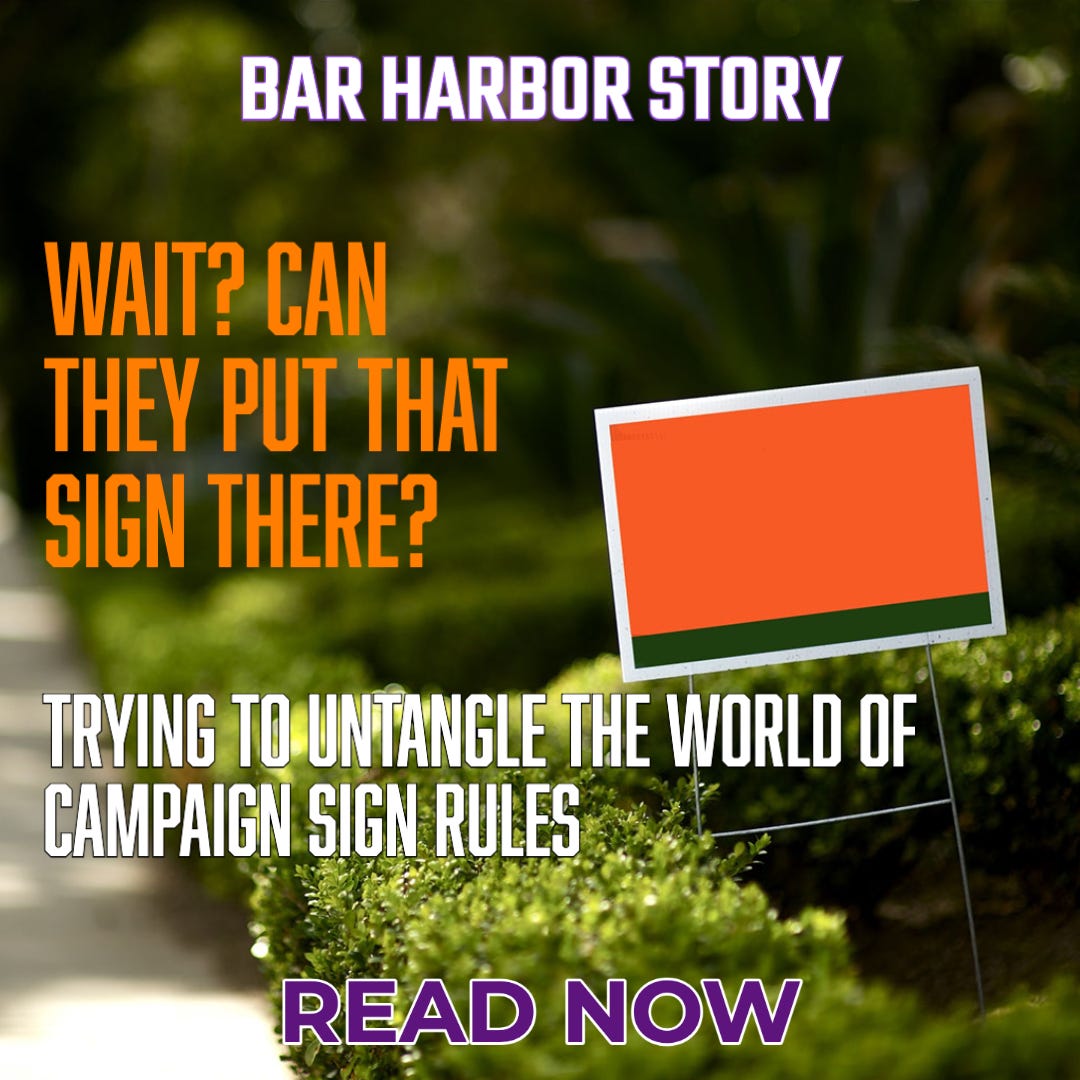Wait? Can they put that sign there?
Trying to untangle the world of campaign sign rules
BAR HARBOR—This past week as more campaign signs for local elections popped up along roadways, social media posts began popping up, too, with people asking if they can take campaign yard signs down off the edges of their properties. Or maybe it was fully on their properties? They weren’t sure.
They were worried. If they took the sign down was that against the law?
There was a lot of advice on social media, but there was also property owner hesitation because what if it was the wrong advice? What if the grassy corner of their yard was a public right of way? Would they be fined?
Across Bar Harbor, property owners are trying to determine if they can remove signs for candidates that they might not support, signs that have been placed on the corner of their property or in front of their business. And they want to know the rules.
According to Bar Harbor Police Sergeant Doug Brundrett, temporary signs are allowed in a public right of way during election cycles. However, there are some restrictions. The sign can’t restrict sight lines and cause traffic hazards.
A guide sent out by Stephen Landry, a traffic engineer with the Maine DOT said that “temporary signs are also prohibited on traffic control devices (stop signs, yield signs, warning signs, guide signs, regulatory signs, etc.), on all utility poles and trees, on islands within a rotary/roundabout, and in medians/islands in the center of the road that are fewer than six feet wide.”
According to Code Enforcement Officer Angela Chamberlain, Bar Harbor’s town ordinance has some exemptions from permits and approvals. “Political signs on private properties or vehicles only, provided that such sign shall not exceed six square feet in sign area, shall not be placed in such location as to constitute a traffic or pedestrian safety hazard, and shall not be displayed for more than 42 days prior to the appropriate election or more than two days following such election.”
If someone has placed a sign on your property that you didn’t approve, Chamberlain said, state statute requires that the sign owner place their name, contact information and dates of placement on the sign. The property owner can then contact the sign owner and request the sign’s removal. Sometimes that information is on the sign’s back and not visible from the roadway.
According to the town’s guidelines, signs “shall not be erected on private property without permission.”
If a property owner is confused about whether the sign is on their property or part of the town’s or state’s right of way or easement, they can call Maine Department of Transportation or the Bar Harbor Public Works Department, which should be able to confirm where the right of ways are located, Chamberlain said. Brundett made a similar suggestion.
To remove a sign without authorization or destroy one violates state law. It is a civil, not criminal violation.






